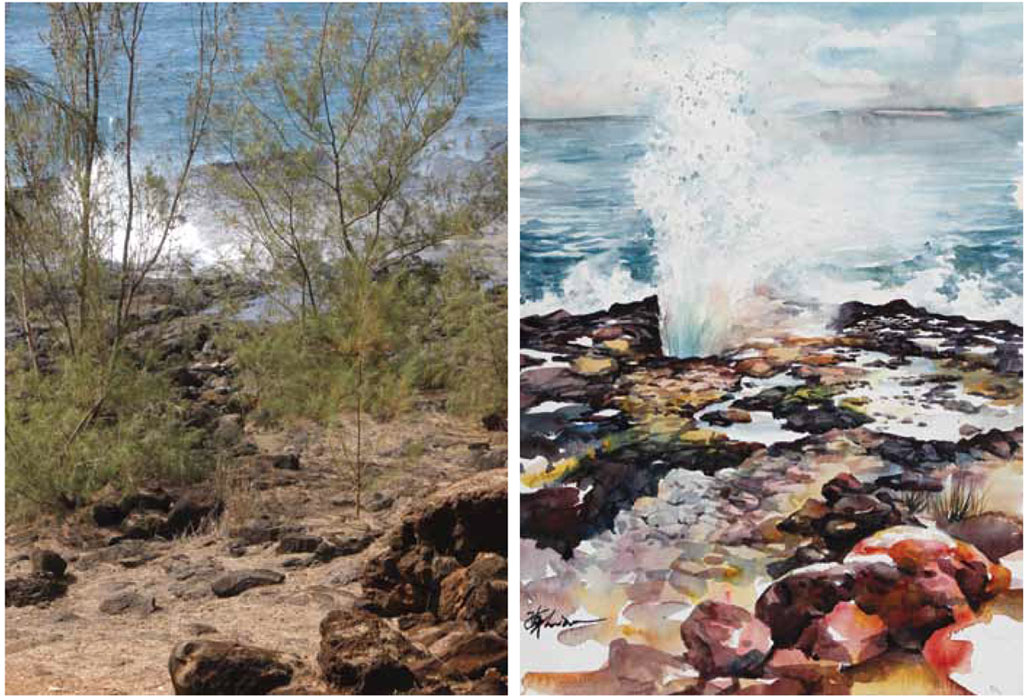
What is good composition? I believe a good composition is a graceful and comfortable arrangement of objects in a painting, where the viewer’s eye can travel with interest and ease. When composing your landscape paintings, you as the artist are the boss, not the scene. In Chinese painting, we paint not what we see, but what we want to see. Following are simple techniques for improving your composition. When you find a pleasing composition, you are halfway to creating a wonderful piece of art.

Adding or removing objects from your scene is another way to strengthen and improve your landscape composition. This can be easily done when painting from photographs as well as plein air. While painting with a group of students at Spouting Horn in Kauai, Hawaii, I removed all the foreground trees because they blocked the view toward the horn, which was a hole in the rocks that splashed water up high and made fantastic sounds.
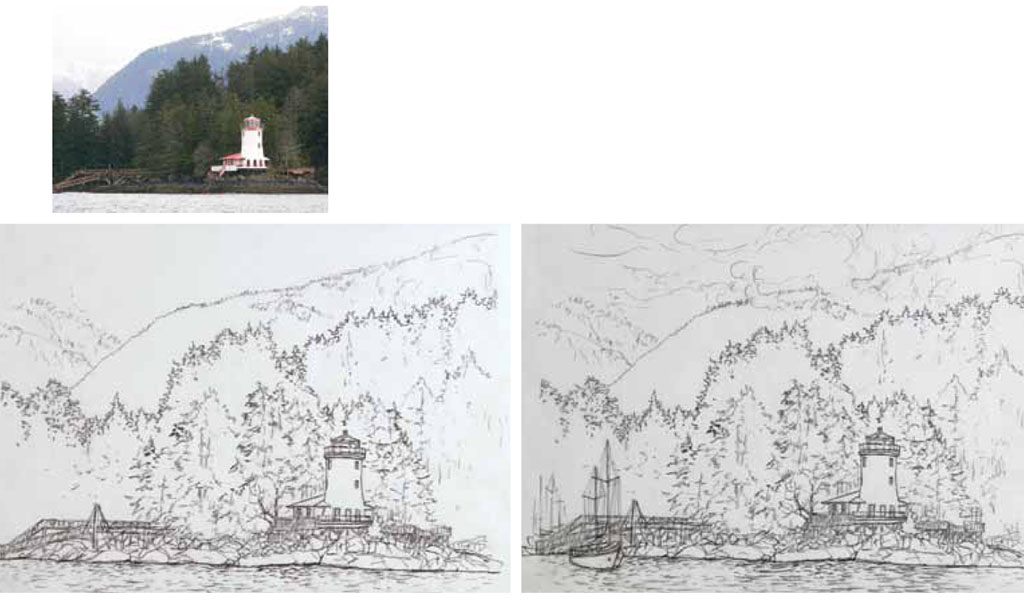
Sometimes in a scene you may encounter a long horizontal shore of a beach. Here, the Sitka, Alaska, lighthouse is beautifully framed by trees, rocks and mountains, but the shoreline is a bit boring when sketched as is. I chose to break up the long line by adding a sailboat on the left. Other objects that might help break up a scene are birds, mist and fallen trees.
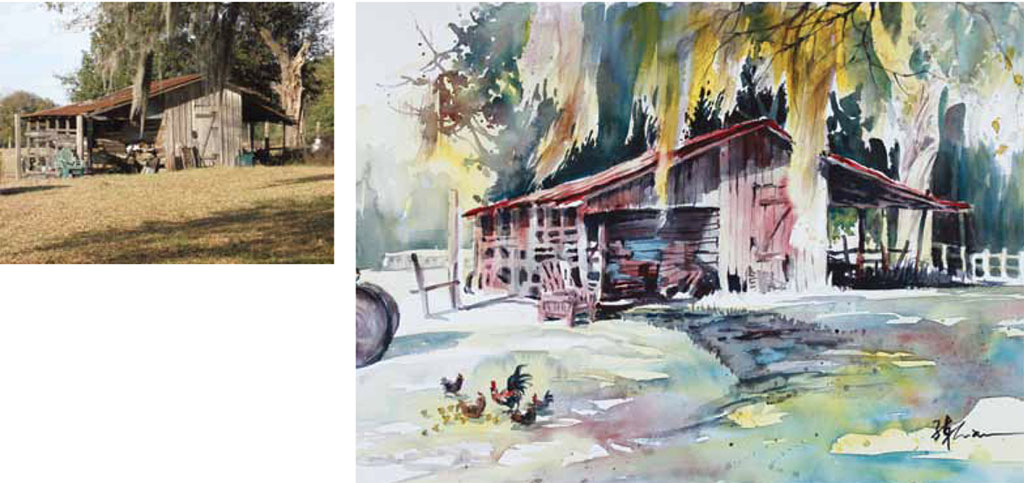
Often there is an object you want to include, but it’s outside of your frame of reference or photograph. I snapped this photo of a shed in Florida from the angle I liked best, but I was unable to capture the haystack and chickens outside of the frame to the left. I relocated them into the scene to add a bit of action to the composition.
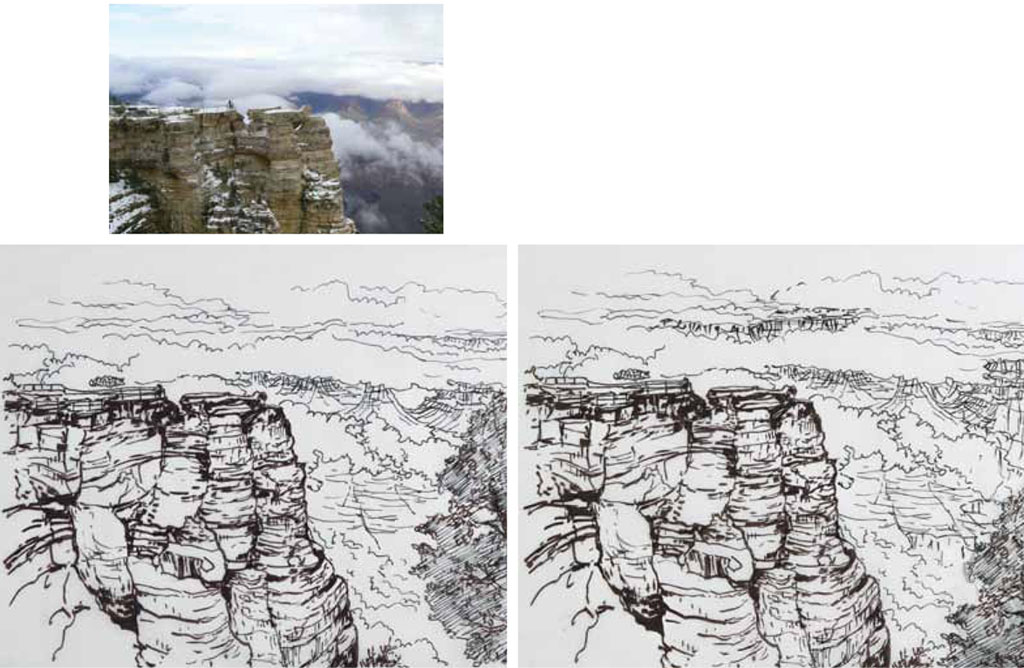
Changing an object’s height can also improve a landscape’s composition. I sketched this scene of the Grand Canyon as is, but the way the treetop’s height aligned with the canyon was unappealing and stiff. In my second sketch, I lowered the tree so that the cliff appears more tall and dominant. Adjusting the heights of rocks and trees is a great visual effect to make your scenes more striking.
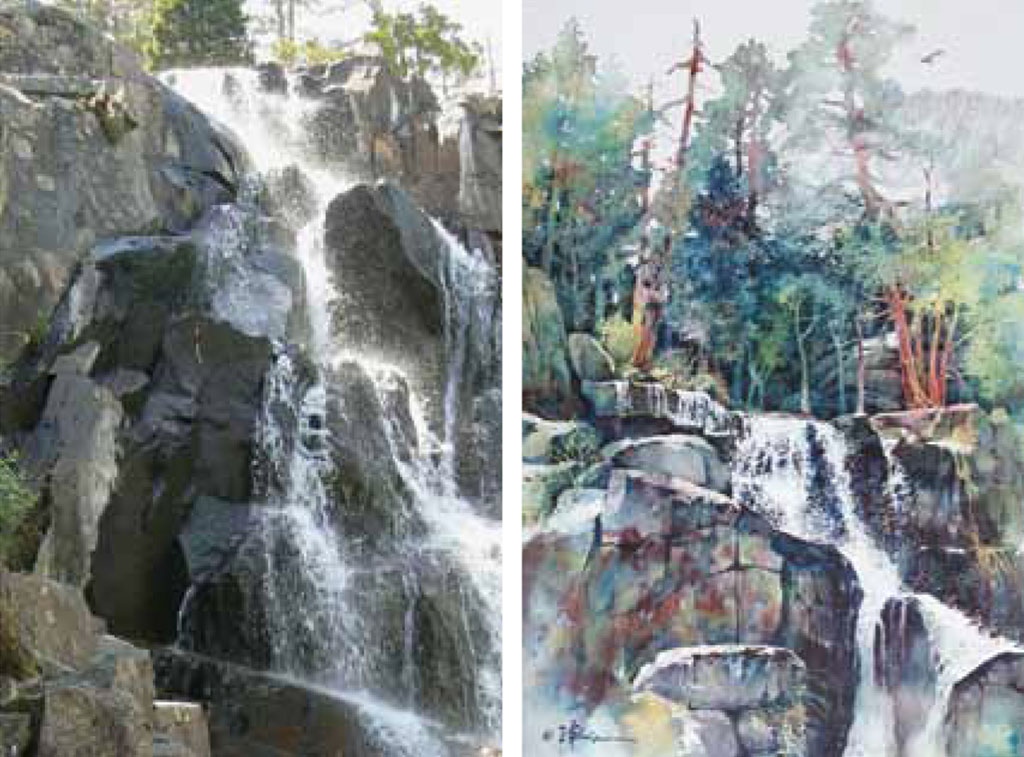
Some landscapes have a major element that cuts through the entire scene, such as a waterfall. When centered, it can tend to look rigid and dull. Break up the object by changing its vertical path and adding trees, rocks and other subject matter. In my reference photo of Eagle Falls in South Lake Tahoe, the water drops down vertically dividing the landscape in half. I was able to climb to another location about 10 feet away to get a much better angle that depicts the water falling from right to left and back to right.

You can easily improve a painting’s composition by adding action and life. First, I sketched this rocky beach in Monterey, California, as is and found it boring. I added birds in the sky and splashing around the rocks, making it much more lively and inviting.
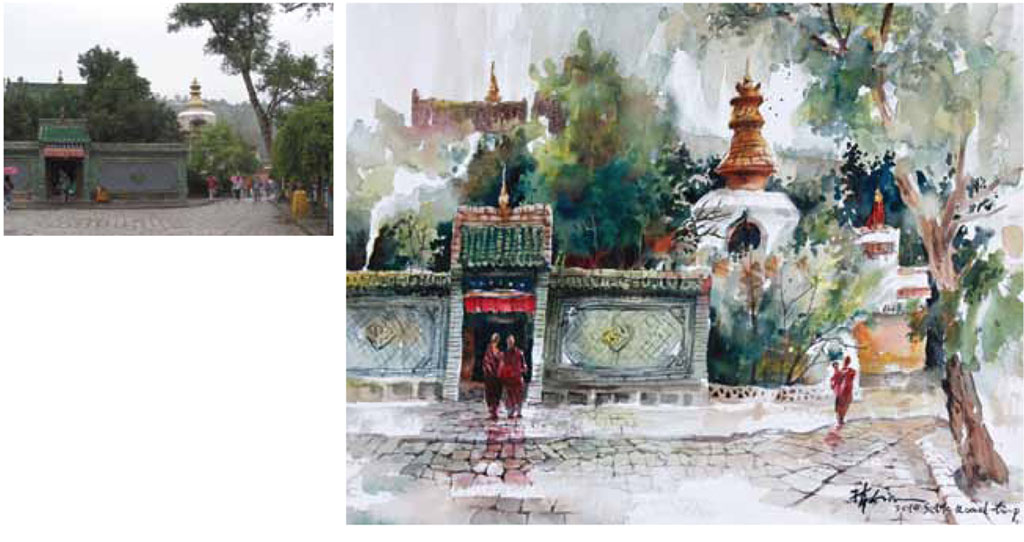
Boosting the moods of a landscape is a nonphysical way to enhance a painting’s composition. I did this watercolor sketch of a Tibetan temple during a light rain. To enhance the mood, I added more mist and rain with broad strokes of color in the sky, and painted fewer details on the foliage and building edges. I also added the figures’ reflections on the ground, greatly improving the landscape’s mood.